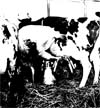THE FUNDING OF AGRARIAN SECTOR IN CANTABRIA, 1850-1930
Abstract
The article's objective is to analize the funding of agrarian sector in Cantabria between 1850-1930. In the first part, the problem of access to credit for traditional peasant economies of the region are studied, through sharecropping as a form of credit with interlinked transactions and class-efficient institution responsible for low economic efficiency of cattle sector and agrarian backwardness. In the second part, funding vías that maked feasible cattle modernization in the first thirty year of XXth century are explored, when credit to consume predominant in the traditional peasant economy gave pass to credit to production. Such a funding was materialized in two ways: the benefits of big cattle exploitations, grouped from 1917 in the Cattle raising Provincial Association, and agrarian cooperativism of the catholic syndicates (analized in the third part of the article) that maked possible vertical integration of small and medium size cattle exploitations in the milk industrial complex created in those years. The article ends with a final considerations about the creation of a production cooperative by the these syndicates in the first years of II Republic, in the face of rising difficulties for their members due to milk prices downfall and increasing endebtment levels of small and medium peasants.
Downloads
-
Abstract191
-
PDF (Español (España))84

The published works by this Journal are subject to the following terms:
1. The Publication Service of the University of Murcia (the Editor) owns the copyright of its publications. It promotes and allows its use under the indicated licence in Section 2.
© Servicio de Publicaciones, Universidad de Murcia, 2011
2. Papers are digitally published under the licence Creative Commons Reconocimiento-NoComercial-SinObraDerivada 3.0 España (legal text). They can be copied, used, disseminated, transferred and publically presented if: i) the author is quoted, as well as the original source of publication (Journal, editorial and URL); ii) they are not used for commercial purposes; iii) the licence of use is mentioned.
3. Auto-file Conditions. It is allowed and authors are encouraged to digitally disseminate their pre-print versions (versions prior to review) and/or post-print (reviewed version accepted for its publication) since it promotes its early diffusion and the corresponding increase of quotes and scope within the academic community. RoMEO Colour: green.

